#regression testing in devops
Explore tagged Tumblr posts
Text
Automation Testing Insights: Transforming Testing
The global automation testing market size is expected to reach USD 92.45 billion by 2030. Prominent technological advancement in artificial intelligence (AI) and machine learning (ML) is propelling the demand for the market. Mobile application usage is growing across various end-user industries, and smartphone penetration is rising, opening an attractive potential for market expansion. Furthermore, there is a rising demand for automation testing as web-based applications have developed significantly and new software technologies have emerged. The market is growing rapidly due to the increasing usage of ML and AI for advanced analytics and continuous testing across DevOps and DevSecOps areas.
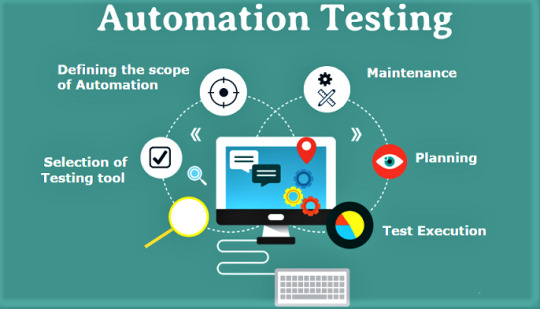
Automation Testing Market Report Highlights
The services segment dominated the market and accounted for over 56% of the global revenue owing to rapid advancements in implementation services, which make it easier to include automation into a functioning infrastructure for software testing
With the aid of this service, automation is integrated into an existing software automation testing setup
The large enterprises segment held the largest revenue share in 2022 as it helps improve efficiency, reduce manual effort, increase test coverage, and ensure the quality of software applications
The BFSI segment is estimated to have significant growth over the forecast period; adopting digitalization in the BFSI sector creates a significant demand for application software automation testing
Gain deeper insights on the market and receive your free copy with TOC now @: Automation Testing Market Report
The emerging use of RPA to automate time-consuming, error-prone manual processes are just a few instances of the usage of AI & ML in automation testing. Moreover, a bot uses the page’s numerous links and web forms to systematically explore through an online application when web crawling or spidering. This is a new use for AI and ML in automation testing. This approach is typically used for indexing online browsing. It may be improved further to perform reverse engineering on an application being tested and automatically find Test Cases. Emerging automation testing tools are significantly fueling market growth.
For instance, Testcraft, a codeless Selenium test automation platform for regression and continuous testing, as well as monitoring of web applications, is gaining traction among users. Their revolutionary AI tech removes maintenance time and cost, as it certainly affects changes in the app. Similarly, Applitools Eyes, Testim, and Test.ai are more automation testing tools propelling the market growth. Furthermore, mergers and acquisitions by other key players are propelling market growth. For instance, in 2022, to improve the user experience on 5G smartphones, Key sight introduced AI-driven and automated testing. Automation and AI enable mobile service providers and app developers to more swiftly evaluate how smartphone users engage with native apps in the real world.
#Automation Testing#Quality Assurance#Software Testing#Test Automation#Continuous Testing#Test Automation Framework#DevOps Testing#Selenium#Test Automation Tools#Performance Testing#Regression Testing#Agile Testing#UIAutomation#Test Scripting#Test Automation Engineer#Codeless Automation#Automation Strategy#CI/CDTesting#Test Automation Best Practices
0 notes
Text
Automated Testing vs. Manual Testing: Which One is Right for Your Project?

Achieving high-quality, reliable software stands as a fundamental requirement in software development. Successful testing functions as an essential tool to discover faults and build performance capabilities that create better user experience outcomes. Two main testing methods dominate the field: automated testing and manual testing. The process of quality software assurance uses different testing approaches that demonstrate their own advantages as well as weaknesses according to specific project requirements and scenarios. We will explore the specifics to determine which testing process works best for your system development efforts.
1. What Is Manual Testing?

Manual testing involves a human tester manually executing test cases without using automation tools. Key Characteristics:
The methodology focuses its efforts on user interface together with usability and experience testing.
Human-centered applications where selection requires discretion include ad hoc testing and enumerative testing as well as examinations that need human evaluation.
Human performers are required during this approach; thus, it demands substantial time.
2. What Is Automated Testing?
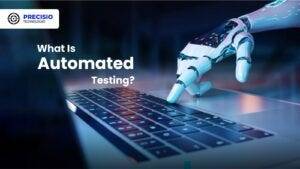
Software performing automated testing executes test cases through workflows and helpers. Key Characteristics:
Efficient for repetitive and regression testing.
Users must spend money on tools along with developing custom scripts for testing.
Reduces human error.
3. Advantages of Manual Testing

Human Intuition: Software testing professionals can detect kernels through their human cognitive ability that automated tools cannot match. The observation and evaluation of visual elements runs more efficiently through human operatives instead of advanced tools.
Flexibility: This method suits exploratory testing specifically because there are no pre-determined scripts available.
Low Initial Investment: Running this approach does not need tool purchases or applications to develop automation frameworks.
Adaptable for UI/UX Testing: Running this approach does not need tool purchases or applications to develop automation frameworks.
4. Advantages of Automated Testing
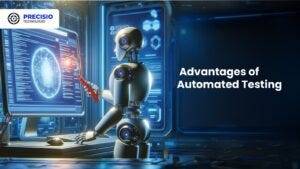
Speed: Executes repetitive tests much faster than humans.
Scalability: The system proves most effective for extensive projects that need constant system updates.
Accuracy: When performing recurring actions, automated systems minimize the chances of human mistakes.
Cost-Efficient in the Long Run: Once established and implemented, the system demands costly investments but ensures continuous development expenses decrease over time.
Better for CI/CD Pipelines: Such testing technology connects various development pipelines that support agile and DevOps methodologies.
5. Disadvantages of Manual Testing

Time-Consuming: The manual performance of repeated tests leads to delayed completion of projects.
Error-Prone: Large applications contain tiny bugs that human testers commonly fail to detect.
Not Ideal for Scalability: The process of increasing manual testing needs additional testers to avoid cost escalations.
6. Disadvantages of Automated Testing

Initial Costs: Organizations must provide high financial resources to procure testing tools together with developing programming constructs.
Limited to Pre-Defined Scenarios: These testing approaches work poorly for handling exploratory or ad hoc testing.
Requires Maintenance: Test scripts need frequent updates when application changes occur.
Not Suitable for UI/UX Testing: Struggles with subjective user experience evaluations.
7. When to Use Manual Testing

Small Projects: The testing method proves beneficial at a low cost for small applications and provides quick assessments.
Exploratory Testing: Testing this approach benefits projects whose scripts have not been defined yet or need evaluation for newly added features.
Visual and Usability Testing: Performing assessments on interface components together with design features.
8. When to Use Automated Testing

Large Projects: Handles scalability for projects with frequent updates.
Regression Testing: Program testing becomes more efficient through automation since automated assessments perform multiple tests following each update process.
Performance Testing: The system performs efficient capabilities to conduct load testing and stress testing.
Continuous Development Environments: Agile progression and DevOps implementations need automation as a core requirement.
READ MORE- https://www.precisio.tech/automated-testing-vs-manual-testing-which-one-is-right-for-your-project/
2 notes
·
View notes
Text
How-To IT
Topic: Core areas of IT
1. Hardware
• Computers (Desktops, Laptops, Workstations)
• Servers and Data Centers
• Networking Devices (Routers, Switches, Modems)
• Storage Devices (HDDs, SSDs, NAS)
• Peripheral Devices (Printers, Scanners, Monitors)
2. Software
• Operating Systems (Windows, Linux, macOS)
• Application Software (Office Suites, ERP, CRM)
• Development Software (IDEs, Code Libraries, APIs)
• Middleware (Integration Tools)
• Security Software (Antivirus, Firewalls, SIEM)
3. Networking and Telecommunications
• LAN/WAN Infrastructure
• Wireless Networking (Wi-Fi, 5G)
• VPNs (Virtual Private Networks)
• Communication Systems (VoIP, Email Servers)
• Internet Services
4. Data Management
• Databases (SQL, NoSQL)
• Data Warehousing
• Big Data Technologies (Hadoop, Spark)
• Backup and Recovery Systems
• Data Integration Tools
5. Cybersecurity
• Network Security
• Endpoint Protection
• Identity and Access Management (IAM)
• Threat Detection and Incident Response
• Encryption and Data Privacy
6. Software Development
• Front-End Development (UI/UX Design)
• Back-End Development
• DevOps and CI/CD Pipelines
• Mobile App Development
• Cloud-Native Development
7. Cloud Computing
• Infrastructure as a Service (IaaS)
• Platform as a Service (PaaS)
• Software as a Service (SaaS)
• Serverless Computing
• Cloud Storage and Management
8. IT Support and Services
• Help Desk Support
• IT Service Management (ITSM)
• System Administration
• Hardware and Software Troubleshooting
• End-User Training
9. Artificial Intelligence and Machine Learning
• AI Algorithms and Frameworks
• Natural Language Processing (NLP)
• Computer Vision
• Robotics
• Predictive Analytics
10. Business Intelligence and Analytics
• Reporting Tools (Tableau, Power BI)
• Data Visualization
• Business Analytics Platforms
• Predictive Modeling
11. Internet of Things (IoT)
• IoT Devices and Sensors
• IoT Platforms
• Edge Computing
• Smart Systems (Homes, Cities, Vehicles)
12. Enterprise Systems
• Enterprise Resource Planning (ERP)
• Customer Relationship Management (CRM)
• Human Resource Management Systems (HRMS)
• Supply Chain Management Systems
13. IT Governance and Compliance
• ITIL (Information Technology Infrastructure Library)
• COBIT (Control Objectives for Information Technologies)
• ISO/IEC Standards
• Regulatory Compliance (GDPR, HIPAA, SOX)
14. Emerging Technologies
• Blockchain
• Quantum Computing
• Augmented Reality (AR) and Virtual Reality (VR)
• 3D Printing
• Digital Twins
15. IT Project Management
• Agile, Scrum, and Kanban
• Waterfall Methodology
• Resource Allocation
• Risk Management
16. IT Infrastructure
• Data Centers
• Virtualization (VMware, Hyper-V)
• Disaster Recovery Planning
• Load Balancing
17. IT Education and Certifications
• Vendor Certifications (Microsoft, Cisco, AWS)
• Training and Development Programs
• Online Learning Platforms
18. IT Operations and Monitoring
• Performance Monitoring (APM, Network Monitoring)
• IT Asset Management
• Event and Incident Management
19. Software Testing
• Manual Testing: Human testers evaluate software by executing test cases without using automation tools.
• Automated Testing: Use of testing tools (e.g., Selenium, JUnit) to run automated scripts and check software behavior.
• Functional Testing: Validating that the software performs its intended functions.
• Non-Functional Testing: Assessing non-functional aspects such as performance, usability, and security.
• Unit Testing: Testing individual components or units of code for correctness.
• Integration Testing: Ensuring that different modules or systems work together as expected.
• System Testing: Verifying the complete software system’s behavior against requirements.
• Acceptance Testing: Conducting tests to confirm that the software meets business requirements (including UAT - User Acceptance Testing).
• Regression Testing: Ensuring that new changes or features do not negatively affect existing functionalities.
• Performance Testing: Testing software performance under various conditions (load, stress, scalability).
• Security Testing: Identifying vulnerabilities and assessing the software’s ability to protect data.
• Compatibility Testing: Ensuring the software works on different operating systems, browsers, or devices.
• Continuous Testing: Integrating testing into the development lifecycle to provide quick feedback and minimize bugs.
• Test Automation Frameworks: Tools and structures used to automate testing processes (e.g., TestNG, Appium).
19. VoIP (Voice over IP)
VoIP Protocols & Standards
• SIP (Session Initiation Protocol)
• H.323
• RTP (Real-Time Transport Protocol)
• MGCP (Media Gateway Control Protocol)
VoIP Hardware
• IP Phones (Desk Phones, Mobile Clients)
• VoIP Gateways
• Analog Telephone Adapters (ATAs)
• VoIP Servers
• Network Switches/ Routers for VoIP
VoIP Software
• Softphones (e.g., Zoiper, X-Lite)
• PBX (Private Branch Exchange) Systems
• VoIP Management Software
• Call Center Solutions (e.g., Asterisk, 3CX)
VoIP Network Infrastructure
• Quality of Service (QoS) Configuration
• VPNs (Virtual Private Networks) for VoIP
• VoIP Traffic Shaping & Bandwidth Management
• Firewall and Security Configurations for VoIP
• Network Monitoring & Optimization Tools
VoIP Security
• Encryption (SRTP, TLS)
• Authentication and Authorization
• Firewall & Intrusion Detection Systems
• VoIP Fraud DetectionVoIP Providers
• Hosted VoIP Services (e.g., RingCentral, Vonage)
• SIP Trunking Providers
• PBX Hosting & Managed Services
VoIP Quality and Testing
• Call Quality Monitoring
• Latency, Jitter, and Packet Loss Testing
• VoIP Performance Metrics and Reporting Tools
• User Acceptance Testing (UAT) for VoIP Systems
Integration with Other Systems
• CRM Integration (e.g., Salesforce with VoIP)
• Unified Communications (UC) Solutions
• Contact Center Integration
• Email, Chat, and Video Communication Integration
2 notes
·
View notes
Text
Explore Career Opportunities: The Importance of Selenium WebDriver Training"
In the rapidly evolving landscape of software testing, proficiency in Selenium WebDriver has become a key differentiator for professionals. Whether you're already in the field or aspiring to enter it, investing time in Selenium WebDriver training can significantly boost your career prospects. Embracing Selenium's capabilities becomes even more accessible and impactful with Selenium Training in Hyderabad. This training equips individuals with the skills and knowledge to harness the full potential of Selenium, enabling them to proficiently navigate web automation challenges and contribute effectively to their respective fields. Let's delve into the reasons why acquiring skills in Selenium WebDriver is essential for a successful career in software testing.

1. Industry Relevance:
Selenium WebDriver is not just another tool; it's an industry-standard for automating web applications. Its widespread adoption across various sectors makes it a must-have skill for professionals in the field of software testing and quality assurance. Knowing Selenium WebDriver is a clear indicator of industry relevance.
2. Career Opportunities:
The demand for professionals with Selenium skills is on the rise. Many organizations specifically seek candidates well-versed in Selenium when hiring for testing roles. Whether you're aiming for a test automation engineer position or a quality assurance role, Selenium proficiency enhances your employability.
3. Efficient Testing Practices:
One of the primary benefits of Selenium WebDriver is its ability to automate repetitive testing tasks. This not only accelerates the testing process but also ensures more reliable results. Automated testing with Selenium can significantly reduce the time and effort required for regression testing, enabling faster and more efficient releases.
4. Cross-Browser Testing:
Web applications need to provide a consistent user experience across various browsers. Selenium WebDriver supports cross-browser testing, allowing you to test your applications on different browsers like Chrome, Firefox, Safari, and more. This capability is crucial for identifying and addressing compatibility issues.
5. Integration with Other Tools:
Selenium WebDriver seamlessly integrates with other tools and frameworks, such as TestNG and JUnit. This integration enhances the overall test automation capabilities, making it easier to manage and report test results. A well-integrated testing environment is a valuable asset for any QA professional. To unlock the full potential of Selenium and master the art of web automation, consider enrolling in the Top Selenium Training Institute.
6. Continuous Integration and Continuous Deployment (CI/CD):
In the era of DevOps, where continuous integration and continuous deployment are standard practices, Selenium WebDriver plays a pivotal role. Automated testing is a critical component of CI/CD pipelines, ensuring that new code changes don't introduce regressions. Knowledge of Selenium is, therefore, advantageous in a DevOps environment.

7. Cost-Efficiency:
Automated testing with Selenium proves to be cost-efficient, particularly for large and complex applications. While setting up automated scripts requires an initial investment of time and resources, the long-term benefits in terms of reduced manual testing efforts and faster release cycles outweigh the initial costs.
8. Skill Diversification:
Adding Selenium WebDriver to your skill set goes beyond just mastering a tool; it's about diversifying your expertise. For professionals in software development or quality assurance, knowing Selenium showcases your commitment to staying abreast of industry-relevant tools and technologies.
In conclusion, Selenium WebDriver training is not just about learning a tool; it's about unlocking a world of career opportunities. As the demand for skilled software testing professionals continues to grow, those with Selenium proficiency will find themselves well-positioned for success. Whether you're aiming to advance in your current role or explore new career horizons, investing in Selenium WebDriver training is a strategic move that can propel your career to new heights.
2 notes
·
View notes
Text
Exploring the Expansive Horizon of Selenium in Software Testing and Automation
In the dynamic and ever-transforming realm of software testing and automation, Selenium stands as an invincible powerhouse, continually evolving and expanding its horizons. Beyond being a mere tool, Selenium has matured into a comprehensive and multifaceted framework, solidifying its position as the industry's touchstone for web application testing. Its pervasive influence and indispensable role in the landscape of software quality assurance cannot be overstated.

Selenium's journey from a simple automation tool to a complex ecosystem has been nothing short of remarkable. With each new iteration and enhancement, it has consistently adapted to meet the evolving needs of software developers and testers worldwide. Its adaptability and extensibility have enabled it to stay ahead of the curve in a field where change is the only constant. In this blog, we embark on a thorough exploration of Selenium's expansive capabilities, shedding light on its multifaceted nature and its indispensable position within the constantly shifting landscape of software testing and quality assurance.
1. Web Application Testing: Selenium's claim to fame lies in its prowess in automating web testing. As web applications proliferate, the demand for skilled Selenium professionals escalates. Selenium's ability to conduct functional and regression testing makes it the preferred choice for ensuring the quality and reliability of web applications, a domain where excellence is non-negotiable.
2. Cross-Browser Testing: In a world of diverse web browsers, compatibility is paramount. Selenium's cross-browser testing capabilities are instrumental in validating that web applications perform seamlessly across Chrome, Firefox, Safari, Edge, and more. It ensures a consistent and user-friendly experience, regardless of the chosen browser.
3. Mobile Application Testing: Selenium's reach extends to mobile app testing through the integration of Appium, a mobile automation tool. This expansion widens the scope of Selenium to encompass the mobile application domain, enabling testers to automate testing across iOS and Android platforms with the same dexterity.
4. Integration with Continuous Integration (CI) and Continuous Delivery (CD): Selenium seamlessly integrates into CI/CD pipelines, a pivotal component of modern software development. Automated tests are executed automatically upon code changes, providing swift feedback to development teams and safeguarding against the introduction of defects.
5. Data-Driven Testing: Selenium empowers testers with data-driven testing capabilities. Testers can execute the same test with multiple sets of data, facilitating comprehensive assessment of application performance under various scenarios. This approach enhances test coverage and identifies potential issues more effectively.
6. Parallel Testing: The ability to run tests in parallel is a game-changer, particularly in Agile and DevOps environments where rapid feedback is paramount. Selenium's parallel testing capability accelerates the testing process, ensuring that it does not become a bottleneck in the development pipeline.
7. Web Scraping: Selenium's utility extends beyond testing; it can be harnessed for web scraping. This versatility allows users to extract data from websites for diverse purposes, including data analysis, market research, and competitive intelligence.
8. Robotic Process Automation: Selenium transcends testing and enters the realm of Robotic Process Automation (RPA). It can be employed to automate repetitive and rule-based tasks on web applications, streamlining processes, and reducing manual effort.
9. Community and Support: Selenium boasts an active and vibrant community of developers and testers. This community actively contributes to Selenium's growth, ensuring that it remains up-to-date with emerging technologies and industry trends. This collective effort further broadens Selenium's scope.
10. Career Opportunities: With the widespread adoption of Selenium in the software industry, there is a burgeoning demand for Selenium professionals. Mastery of Selenium opens doors to a plethora of career opportunities in software testing, automation, and quality assurance.
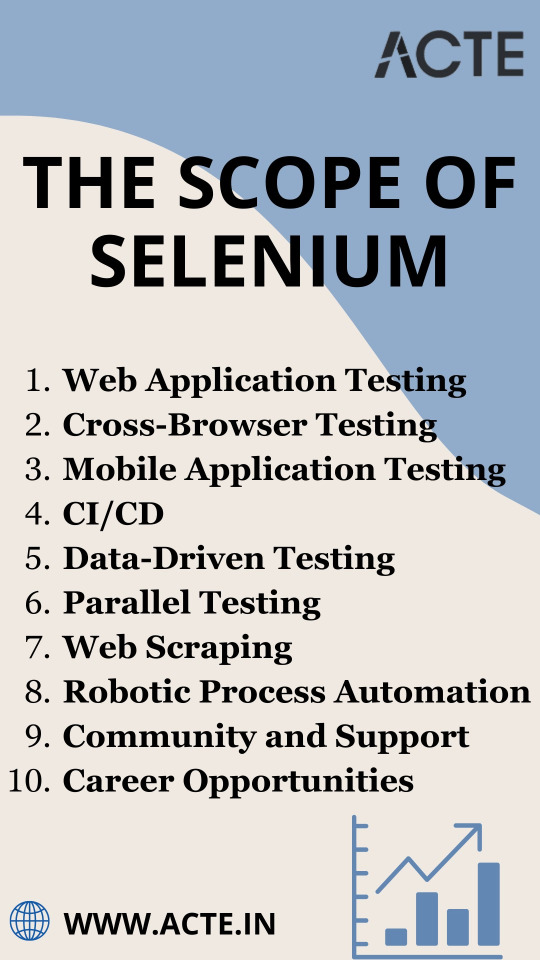
In conclusion, Selenium's scope is expansive and continuously evolving, encompassing web and mobile application testing, CI/CD integration, data-driven testing, web scraping, RPA, and more. To harness the full potential of Selenium and thrive in the dynamic field of software quality assurance, consider enrolling in training and certification programs. ACTE Technologies, a renowned institution, offers comprehensive Selenium training and certification courses. Their seasoned instructors and industry-focused curriculum are designed to equip you with the skills and knowledge needed to excel in Selenium testing and automation. Explore ACTE Technologies to elevate your Selenium skills and stay at the forefront of the software testing and automation domain, where excellence is the ultimate benchmark of success.
3 notes
·
View notes
Text
Adaptive Test Automation: The Future of Intelligent Software Testing

Introduction to Adaptive Test Automation
Adaptive test automation stands as a revolutionary approach in the world of software testing. It streamlines testing operations by using intelligent automation. ideyaLabs pioneers this movement by driving innovation that accelerates quality assurance. Fast-paced industries demand tools that adjust to changes, automate repetitive tasks, and reduce manual overhead.
Benefits of Adaptive Test Automation with ideyaLabs
Organizations experience faster releases and safer deployments. Adaptive test automation improves flexibility by recognizing changes in code and test environments. It evolves with growing business requirements. ideyaLabs crafts solutions that reduce time spent on regression testing and defect management. Test engineers focus on critical thinking and strategic analysis while automation processes repetitive tasks.
Key Features of Adaptive Test Automation
Adaptive test automation embraces dynamic test script generation. Systems react to code modifications without manual intervention. Automated frameworks handle diverse platforms and devices. Predictive analytics identify potential risks before failures occur. ideyaLabs integrates real-time monitoring and intelligent reporting for comprehensive visibility.
How ideyaLabs Implements Adaptive Test Automation
ideyaLabs employs AI-driven algorithms that update test cases in response to application changes. Scriptless automation tools empower teams with limited coding knowledge to create robust tests. Custom dashboards display live results and actionable insights. ideyaLabs ensures that testing adapts continuously, enabling organizations to catch issues earlier in the development process.
Challenges Addressed by Adaptive Test Automation
Traditional automation frameworks demand ongoing maintenance and frequent resource allocation. Adaptive test automation reduces this workload. ideyaLabs minimizes disruptions during application updates by automatically identifying impacted test cases. Clients notice fewer false negatives and lower operational costs.
Business Impact of Adaptive Test Automation
Enterprises strive for speed without compromising product quality. Adaptive frameworks enable near-instant feedback on new features. ideyaLabs delivers solutions that scale according to business needs. Teams achieve targeted release cycles and higher customer satisfaction.
Integrating Adaptive Test Automation in Agile and DevOps
Agile and DevOps workflows benefit from intelligent adaptation. ideyaLabs integrates adaptive test automation into CI/CD pipelines. Automated tests evolve alongside application features. Teams receive early validation, enhancing rapid development and deployment.
Real-World Examples: ideyaLabs in Action
ideyaLabs transforms manual testing environments into automated ecosystems. Clients gain measurable productivity improvements. Adaptive test automation reduces the risk of undetected bugs entering production. Organizations scale faster and increase test coverage across multiple product lines.
Future Trends in Adaptive Test Automation
The future demands highly responsive systems capable of learning from user behavior. Adaptive test automation will embrace more advanced AI and machine learning. ideyaLabs focuses on expanding the capabilities of self-healing scripts. Automated frameworks will require minimal manual intervention.
Best Practices for Implementing Adaptive Test Automation with ideyaLabs
Organizations start with a strategic roadmap. ideyaLabs recommends identifying business-critical processes and integrating adaptive automation step by step. Test data management and effective collaboration improve outcomes. Teams monitor results using customized analytics tools.
Conclusion: The Next Generation of Software Testing with ideyaLabs
Adaptive test automation signifies a new era in intelligent testing. ideyaLabs leads this transition by offering innovative, resilient frameworks. Businesses stay future-ready, deliver exceptional customer experiences, and maintain high software quality. The journey towards adaptive testing empowers organizations to thrive in competitive digital landscapes.
0 notes
Text
Selenium: The Cornerstone of Modern Web Automation Testing
In our increasingly digital world, websites are no longer just static information hubs. They are complex, interactive platforms powering essential services such as digital banking, e-learning, online shopping, and enterprise tools. As the role of web applications continues to expand, maintaining their reliability, efficiency, and intuitive design is more critical than ever. Whether managing a SaaS product or a dynamic e-commerce site, delivering a smooth user experience is inseparable from a robust and functional web interface.
Selenium: More Than Just a Single Tool
Selenium is often misunderstood as a standalone automation tool. In reality, it is a suite of specialized components, each addressing specific needs in browser-based automation. This flexibility allows teams to tailor their automation strategy according to their skill levels and project complexity.
The Selenium suite comprises:
Selenium IDE: A user-friendly browser extension for Chrome and Firefox that enables record-and-playback testing. It’s great for quick test creation, demos, or for those new to automation.
Selenium WebDriver: The core engine that offers direct interaction with web browsers through a rich API. It supports multiple languages and allows simulation of real-world user behavior with high precision.
Selenium Grid: Designed for distributed execution, it enables running tests in parallel across various browsers, operating systems, and machines, significantly reducing test duration and enhancing coverage.
This structure supports a progressive approach starting with simple test recordings and scaling up to advanced, enterprise-grade test frameworks. Enhance your web automation skills with our comprehensive Selenium Course Online, designed for beginners and professionals to master real-time testing techniques.

What Sets Selenium Apart in the Automation Landscape
Selenium remains a top choice among automation frameworks due to its open-source nature, adaptability, and strong community support. Its compatibility with several programming languages including Java, Python, JavaScript, and C# makes it highly versatile.
Notable strengths of Selenium include:
Cross-browser compatibility (Chrome, Firefox, Safari, Edge, etc.)
Cross-platform support for Windows, macOS, and Linux
Integration readiness with DevOps tools like Maven, Jenkins, Docker, and CI/CD pipelines
Large and active community, ensuring continuous enhancements and robust documentation
These features make Selenium an ideal solution for Agile and DevOps-driven environments where flexibility and scalability are essential.
Selenium WebDriver: The Automation Power Core
Selenium WebDriver is the most powerful and widely used component of the suite. It communicates directly with browsers using their native automation APIs, which leads to faster execution and more stable tests.
With WebDriver, testers can:
Simulate user actions such as clicking, typing, scrolling, and navigation
Interact with dynamic content and complex UI elements
Handle browser alerts, multiple tabs, and asynchronous behaviors
Use sophisticated waiting strategies to reduce flakiness
Its language flexibility and ease of integration with popular testing frameworks make it suitable for both functional and regression testing in modern applications.
Selenium Grid: For Fast, Parallel, and Scalable Testing
As projects grow in scale and complexity, running tests sequentially becomes impractical. Selenium Grid addresses this by supporting parallel test execution across different systems and environments.
Here’s how it works:
A central Hub routes test commands to multiple Nodes, each configured with specific browser and OS combinations.
Tests are automatically matched with suitable Nodes based on the desired configuration.
This setup enables:
Faster test cycles through concurrency
Expanded test coverage across platforms and browsers
Seamless scalability when integrated with Docker or cloud environments
Selenium Grid is particularly beneficial for CI/CD pipelines, enabling frequent and reliable testing in short time frames.
Challenges in Selenium and How to Overcome Them
Despite its many advantages, Selenium presents a few challenges. Fortunately, these can be addressed effectively with best practices and complementary tools.
1. Test Instability
Tests may fail unpredictably due to timing issues or dynamic content. Use robust locators, implement explicit or fluent waits, and add retry mechanisms where necessary.
2. High Maintenance Overhead
Frequent UI changes can break test scripts. Adopt the Page Object Model (POM), centralize selectors, and design modular, reusable components.
3. Lack of Native Reporting
Selenium does not include reporting features by default. Integrate reporting tools such as ExtentReports, Allure, or custom HTML reporters to visualize test outcomes and logs.
4. No Built-in Test Management
Selenium focuses on execution, not planning or tracking. Pair Selenium with test management tools like TestRail, Zephyr, or Jira plugins to organize and track testing efforts. Proactively addressing these issues leads to more reliable, maintainable, and scalable automation frameworks. Kickstart your career with our Best Training & Placement Program, offering expert-led sessions and guaranteed job support for a successful future in tech.

Selenium’s Strategic Role in Modern QA
As the software industry embraces continuous integration and delivery, quality assurance is shifting earlier in the development lifecycle, a practice known as Shift Left. Selenium supports this transition by enabling early and continuous automation.
Key benefits in modern workflows include:
Integration with CI tools like Jenkins, GitHub Actions, or Azure DevOps
Easy version control and code collaboration via Git
Support for data-driven testing, allowing validation of multiple scenarios using external data sources
This makes Selenium not just a testing tool, but a strategic partner in achieving high-quality, fast-paced software releases.
Conclusion
Selenium continues to play a crucial role in modern web automation. Its blend of flexibility, scalability, and open-source accessibility makes it a go-to framework for both startups and large enterprises. Whether you are verifying basic functionalities or managing a complex automation suite, Selenium equips you with the tools to build efficient and dependable tests. By following best practices such as structured test architecture, modular design, and integrated reporting Selenium can elevate your quality assurance efforts into a long-term strategic asset. As web technologies evolve and user expectations rise, Selenium will remain at the forefront of automated testing solutions.
0 notes
Text
Getting Started with Software Testing
Software testing is a crucial process in which a software application is evaluated to ensure it works correctly and is free from errors. This evaluation can be performed manually or with automated tools to assess both functionality and performance. As emphasized in our Software Testing Course in Bangalore, testing plays a vital role in identifying defects and ensuring the application is accurate, efficient, and user-friendly.

Key Stages of Software Testing
Software testing is typically divided into two main phases: verification and validation.
Verification involves checking whether the software meets the specified requirements and follows established standards. Activities like code reviews, static analysis, and inspections are commonly performed at this stage, often by DevOps teams. It answers the question: “Are we building the product the right way?” and contributes significantly to quality control.
Validation, on the other hand, determines whether the finished product meets business goals and user needs. Techniques like beta testing, prototyping, and goal analysis are used to validate the software. It answers: “Are we building the right product?”
Why Software Testing Matters
Testing is essential for maintaining high-quality software that performs reliably. Even minor bugs can cause major issues such as delays, user dissatisfaction, reputational damage, or financial loss.
By integrating testing throughout the development process, teams can identify issues early, ensure each feature behaves as expected, and prevent costly problems later on.
Common Software Testing Types and Techniques
Different types of testing are applied at various stages of development, including:
Unit Testing: Tests individual pieces of code (functions, methods, etc.). It’s usually automated and forms the foundation of the testing process.
Integration Testing: Ensures that different modules or services in an application work together correctly such as the interaction between the app and its database.
Functional Testing: Validates that the software meets specified business requirements by comparing expected and actual outputs. This is covered in detail in our Software Testing Online Course.
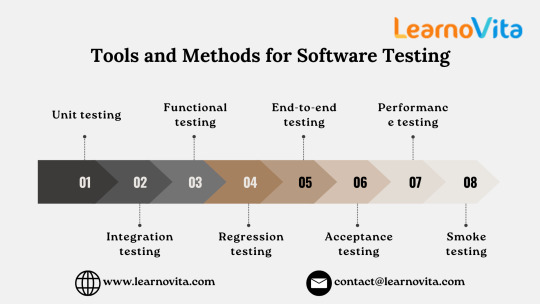
Regression Testing: Rechecks previously tested features to confirm that new code changes haven't introduced new bugs or broken existing functionality.
End-to-End Testing (System Testing): Simulates real user scenarios to test the software in a complete system environment and ensure it behaves as intended.
Acceptance Testing: Determines whether the software is ready for deployment. This includes:
Business Acceptance Testing (BAT)
User Acceptance Testing (UAT)
Performance Testing: Evaluates how the system performs under load. It includes:
Load Testing
Stress Testing
Endurance Testing
Spike Testing
Smoke Testing: A quick initial check of the basic functionality in a new build to decide if it's stable enough for further testing.
Conclusion
Software testing is a vital part of the development lifecycle. A single missed defect can impact user satisfaction and trust. By thoroughly testing software from the start, teams can ensure that applications are reliable, meet user needs, and deliver consistent performance ultimately leading to successful, high-quality products.
0 notes
Text
What is a QA Software Testing Course, and Why is it Important in Today’s Tech Industry?
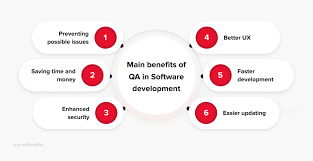
Introduction
Imagine launching a new app, only to find users abandoning it due to bugs and glitches. In the fast-paced tech world, such failures can cost companies millions. That’s where QA (Quality Assurance) software testing comes in. A QA software testing course teaches learners how to ensure digital products function smoothly, meet customer expectations, and maintain brand credibility. Today, businesses can't afford to release faulty products. The demand for skilled QA professionals is growing across sectors. Quality assurance testing courses are designed to equip learners with practical skills to meet this demand. Whether you're new to tech or switching careers, enrolling in a QA Testing Online Training Course can open doors to a stable and high-paying job in the IT industry.
What is a QA Software Testing Course?
A QA software testing course is a structured program that trains individuals to test software applications to ensure they are bug-free, functional, and meet user requirements. It typically includes both manual and automated testing techniques.
Key Concepts Covered
Software Development Life Cycle (SDLC)
Software Testing Life Cycle (STLC)
Manual Testing Basics
Automation Testing (using tools like Selenium, QTP)
Defect Tracking and Reporting
Agile and DevOps Methodologies
Test Planning and Documentation
Why is QA Testing Important in the Tech Industry?
1. Quality Control Saves Money
According to the Consortium for IT Software Quality, poor software quality costs the U.S. economy over $2 trillion annually. QA testers prevent such losses by identifying issues early.
2. User Experience Matters
A broken app leads to bad reviews and customer loss. QA testing ensures a seamless user experience.
3. Security Compliance
Many industries like healthcare and finance require thorough testing to comply with regulatory standards. QA testers are crucial in ensuring this.
4. Faster Time-to-Market
Automated QA processes allow developers to release updates quickly without sacrificing quality.
What You Will Learn in a QA Testing Online Training Course
1. Manual Testing Techniques
Learn to write and execute test cases, report bugs, and perform usability testing.
2. Automation Testing Tools
Master tools like Selenium, JUnit, TestNG, and Jenkins. Real-world use cases include writing test scripts and running automated regression tests.
3. Test Management Tools
Explore tools like JIRA, Bugzilla, and TestRail for project and defect tracking.
4. Agile and Scrum Frameworks
Work in sprints, participate in stand-ups, and collaborate in cross-functional teams.
5. Live Projects
Get hands-on experience with real-world scenarios, helping you build a solid portfolio.
Real-World Applications of QA Testing Skills
Software Development Companies
Tech firms rely heavily on QA testers to maintain software integrity.
Banking and Finance
Ensuring the security of financial transactions is non-negotiable. QA testers are responsible for safeguarding sensitive data.
E-Commerce
Testing ensures that checkout flows, payment gateways, and inventory systems work flawlessly.
Healthcare
Medical software must be error-free to avoid risks to patient safety. QA professionals ensure compliance with HIPAA and other standards.
Industry Demand for QA Testers
According to Glassdoor, QA Analysts earn an average salary of $75,000 annually in the U.S. A LinkedIn 2024 report listed "QA Testing" as one of the top 10 in-demand tech skills. With the increasing relevance of QA testing courses, more professionals are gaining the skills needed to meet industry standards. The U.S. Bureau of Labor Statistics predicts a 25% job growth for QA roles from 2023 to 2030, making it a promising and future-proof career path.
Course Structure: Step-by-Step Learning
Week 1-2: Fundamentals of Testing
Introduction to SDLC & STLC
Writing test cases
Week 3-4: Manual Testing Deep Dive
Exploratory Testing
Regression Testing
Week 5-6: Automation Basics
Introduction to Selenium
Writing basic scripts
Week 7-8: Advanced Automation
Framework Development
Integration with Jenkins and Git
Week 9-10: Tools and Frameworks
JIRA and Test Management
Real-time project simulation
Week 11-12: Capstone Project
Apply all skills to a live project
Get feedback from mentors
Who Should Take This Course?
Beginners in IT looking to start a tech career.
Non-tech professionals wanting to transition into QA.
Students aiming to build a strong portfolio.
Manual testers planning to upskill with automation.
Benefits of QA Testing Online Training Course
Flexibility
Learn at your pace, from anywhere, without compromising on your schedule.
Affordable
Online courses are often more cost-effective than bootcamps or college programs.
Certification
Get a shareable certificate that can boost your resume and LinkedIn profile.
Placement Assistance
Many platforms offer career support, including resume building, mock interviews, and job referrals.
Common Tools Taught in QA Testing Courses
Tool
Use Case
Selenium
Automated web testing
JIRA
Bug tracking and project management
TestNG
Test framework for Java
Postman
API testing
Jenkins
Continuous integration
Student Testimonials
"After completing my QA Testing Online Training Course, I landed a job within three months. The hands-on projects made all the difference." - Priya K., Software Tester
"I had zero coding experience. This course taught me everything step by step, from manual testing to automation." - Alex R., QA Analyst
Tips for Succeeding in QA Testing Courses
Practice writing test cases daily
Join QA forums and communities for peer support
Complete all assignments and capstone projects
Regularly update your resume with new skills
Frequently Asked Questions (FAQs)
1. Do I need a tech background to join this course?
No, many courses are beginner-friendly and start with the basics.
2. What if I miss a class?
Most QA Testing Online Training Courses offer recorded sessions.
3. Are there any prerequisites?
Basic computer skills and logical thinking are enough to get started.
4. Will I get a certificate?
Yes, most platforms offer a verifiable certificate of completion.
Key Takeaways
QA software testing is essential for delivering high-quality, reliable software.
A QA Testing Online Training Course can equip you with in-demand skills for a growing industry.
Real-world applications span healthcare, finance, retail, and beyond.
Learn tools like Selenium, JIRA, and Jenkins with step-by-step guidance.
Online training is affordable, flexible, and career-focused.
Conclusion
Mastering QA testing skills is one of the smartest career moves in today’s tech-driven job market. Whether you're just starting or aiming to switch careers, a QA Testing Online Training Course offers the tools, support, and flexibility you need to succeed. With comprehensive QA software testing courses, learners gain hands-on experience in identifying bugs, improving software quality, and understanding testing methodologies that are essential in the IT industry. These skills are not only in high demand but also open doors to a wide range of roles in software development and quality assurance.
Ready to test your future? Enroll in a QA Testing Online Training Course today and start building your dream tech career!
1 note
·
View note
Text
DevOps for Mobile: CI/CD Tools Every Flutter/React Native Dev Needs

Does shipping a new version of your mobile app feel like orchestrating a mammoth undertaking, prone to late nights, manual errors, and stressed-out developers? You're not alone. Many teams building with flexible frameworks like Flutter and React Native grapple with antiquated, laborious release processes. The dynamic landscape of mobile demands agility, speed, and unwavering quality – traits often antithetical to manual builds, testing, and deployment. Bridging this gap requires a dedicated approach: DevOps for Mobile. And central to that approach are robust CI/CD tools.
The Bottlenecks in Mobile App Delivery
Mobile application programming inherently carries complexity. Multiple platforms (iOS and Android), diverse device types, intricate testing matrices, app store submission hurdles, and the constant churn of framework and SDK updates contribute to a multifaceted environment. Without disciplined processes, delivering a high-quality, stable application with consistent velocity becomes a significant challenge.
Common Pitfalls Hindering Release Speed
Often, teams find themselves wrestling with several recurring issues that sabotage their release pipelines:
Manual Builds and Testing: Relying on developers to manually build app binaries for each platform is not only time-consuming but also highly susceptible to inconsistencies. Did you use the right signing certificate? Was the correct environment variable set? Manual testing on devices adds another layer of potential omission and delays.
Code Integration Nightmares: When multiple developers merge their code infrequently, the integration phase can devolve into a stressful period of resolving complex conflicts, often introducing unexpected bugs.
Inconsistent Environments: The "it works on my machine" syndrome is pervasive. Differences in SDK versions, build tools, or operating systems between developer machines and build servers lead to unpredictable outcomes.
Lack of Automated Feedback: Without automated testing and analysis, issues like code quality degradation, performance regressions, or critical bugs might only be discovered late in the development cycle, making them expensive and time-consuming to fix.
Laborious Deployment Procedures: Getting a mobile app from a built binary onto beta testers' devices or into the app stores often involves numerous manual steps – uploading artifacts, filling out metadata, managing releases. This is boring work ripe for automation and error.
The aggregate effect of these bottlenecks is a slow, unpredictable release cycle, preventing teams from iterating quickly based on user feedback and market demands. It's a recalcitrant problem needing a systemic resolution.
What DevOps for Mobile Truly Means
DevOps for Mobile applies the foundational principles of the broader DevOps philosophy – collaboration, automation, continuous improvement – specifically to the mobile development lifecycle. It's about fostering a culture where development and operations aspects (though mobile operations are different from traditional server ops) work seamlessly.
Shifting Left and Automation Imperative
A core tenet is "shifting left" – identifying and resolving problems as early as possible in the pipeline. Catching a build issue during commit is vastly preferable to discovering it hours later during manual testing, or worse, after deployment. This early detection is overwhelmingly facilitated by automation. Automation is not merely a convenience in DevOps for Mobile; it's an imperative. From automated code analysis and testing to automated building and distribution, machinery handles the repetitive, error-prone tasks. This frees up developers to focus on writing features and solving complex problems, simultaneously enhancing the speed, reliability, and quality of releases. As an observed pattern, teams that prioritize this shift typically exhibit higher morale and deliver better software.
Core Components of Mobile App Development Automation
Building an effective DevOps for Mobile pipeline, especially for Flutter or React Native apps, centers around implementing Continuous Integration (CI) and Continuous Delivery/Deployment (CD).
The CI/CD Tools Spectrum
Continuous Integration (CI): Every time a developer commits code to a shared repository, an automated process triggers a build. This build compiles the code, runs unit and integration tests, performs static code analysis, and potentially other checks. The goal is to detect integration problems immediately. A failed build means someone broke something, and the automated feedback loop notifies the team instantly.
Continuous Delivery (CD): Building on CI, this process automatically prepares the app for release after a successful build and testing phase. This could involve signing the application, packaging it, and making it available in a repository or artifact store, ready for manual deployment to staging or production environments.
Continuous Deployment (CD): The next evolution of CD. If all automated tests pass and other quality gates are met, the application is automatically deployed directly to production (e.g., app stores or internal distribution). This requires a high level of confidence in your automated testing and monitoring.
Implementing these components requires selecting the right CI/CD tools that understand the nuances of building for iOS and Android using Flutter and React Native.
Essential CI/CD Tools for Flutter & React Native Devs
The ecosystem of CI/CD tools is extensive, ranging from versatile, self-hosted platforms to specialized cloud-based mobile solutions. Choosing the right ones depends on team size, budget, technical expertise, and specific needs.
Picking the Right Platforms
Several platforms stand out for their capabilities in handling mobile CI/CD:
Jenkins: A venerable, open-source automation server. It's highly extensible via a myriad of plugins, offering immense flexibility. However, setting up mobile builds, especially on macOS agents for iOS, can be complex and require substantial configuration and maintenance effort.
GitLab CI/CD: Integrated directly into GitLab repositories, this offers a compelling, unified platform experience. Configuration is via a `.gitlab-ci.yml` file, making it part of the code repository itself. It's robust but also requires managing runners (build agents), including macOS ones.
GitHub Actions: Tightly integrated with GitHub repositories, Actions use YAML workflows (`.github/workflows`) to define automation pipelines. It provides hosted runners for Linux, Windows, and macOS, making iOS builds simpler out-of-the-box compared to purely self-hosted options. It's become a ubiquitous choice for projects hosted on GitHub.
Bitrise: A cloud-based CI/CD specifically designed for mobile apps. Bitrise offers pre-configured build steps (called "Workflows") and integrations tailored for iOS, Android, Flutter, React Native, and more. This specialization greatly simplifies setup and configuration, though it comes as a managed service with associated costs.
AppCenter (Microsoft): Provides integrated CI/CD, testing, distribution, and analytics for mobile apps, including React Native and Flutter support (though Flutter support might be through specific configurations). It aims for a comprehensive mobile development platform experience.
Fastlane: While not a CI server itself, Fastlane is an open-source toolset written in Ruby that simplifies cumbersome iOS and Android deployment tasks (like managing signing, taking screenshots, uploading to stores). It's almost an indispensable complement to any mobile CI system, as the CI server can invoke Fastlane commands to handle complex distribution steps.
The selection often boils down to the build environment you need (especially macOS for iOS), the required level of customization, integration with your existing VCS, and whether you prefer a managed service or self-hosting.
Specific Flutter CI/CD Considerations
Flutter projects require the Flutter SDK to be present on the build agents. Both iOS and Android builds originate from the single Flutter codebase.
Setup: The CI system needs access to the Flutter SDK. Some platforms, like Bitrise, have steps explicitly for this. On Jenkins/GitLab/GitHub Actions, you'll need a step to set up the Flutter environment (often using tools like `flutter doctor`).
Platform-Specific Builds: Within the CI pipeline, you'll trigger commands like `flutter build ios` and `flutter build apk` or `flutter build appbundle`.
Testing: `flutter test` should run unit and widget tests. You might need device/emulator setups or cloud testing services (like Firebase Test Lab, Sauce Labs, BrowserStack) for integration/end-to-end tests, though this adds complexity.
Signing: Signing both Android APKs/App Bundles and iOS IPAs is crucial and requires careful management of keystores and provisioning profiles on the CI server. Fastlane is particularly useful here for iOS signing complexity management.
Teams observed grappling with Flutter CI/CD often struggle most with the iOS signing process on CI platforms.
Specific React Native CI/CD Considerations
React Native projects involve native build tools (Xcode for iOS, Gradle for Android) in addition to Node.js and yarn/npm for the JavaScript parts.
Setup: The build agent needs Node.js, npm/yarn, Android SDK tools, and Xcode (on macOS). NVM (Node Version Manager) or similar tools are helpful for managing Node versions on the build agent.
Platform-Specific Steps: The CI pipeline will have distinct steps for Android (`./gradlew assembleRelease` or `bundleRelease`) and iOS (`xcodebuild archive` and `xcodebuild exportArchive`).
Dependencies: Ensure npm/yarn dependencies (`yarn install` or `npm install`) and CocoaPods dependencies for iOS (`pod install` from within the `ios` directory) are handled by the pipeline before the native build steps.
Testing: Jest is common for unit tests. Detox or Appium are popular for end-to-end testing, often requiring dedicated testing infrastructure or cloud services.
Signing: Similar to Flutter, secure management of signing credentials (Android keystores, iOS certificates/profiles) is essential on the CI server. Fastlane is highly relevant for React Native iOS as well.
Based on project analysis, React Native CI/CD complexity often arises from the interaction between the JavaScript/Node layer and the native build processes, particularly dependency management (`node_modules`, CocoaPods) and environmental differences.
Implementing a Robust Mobile CI/CD Pipeline
Building your Mobile App Development Automation pipeline is not a weekend project. It requires deliberate steps and iteration.
Phased Approach to Adoption
Approaching CI/CD implementation incrementally yields better results and less disruption.
Phase One: Code Quality and Basic CI
Set up automated linters (e.g., ESLint/Prettier for React Native, `flutter analyze` for Flutter).
Configure CI to run these linters on every push or pull request. Fail the build on lint errors.
Integrate unit and widget tests into the CI build process. Fail the build on test failures. This is your foundational CI.
Phase Two: Automated Building and Artifacts
Extend the CI process to automatically build unsigned Android APK/App Bundle and iOS IPA artifacts on successful commits to main/develop branches.
Store these artifacts securely (e.g., S3, built-in CI artifact storage).
Focus on ensuring the build environment is stable and consistent.
Phase Three: Signing and Internal Distribution (CD)
Securely manage signing credentials on your CI platform (using secrets management).
Automate the signing of Android and iOS artifacts.
Automate distribution to internal testers or staging environments (e.g., using Firebase App Distribution, HockeyApp/AppCenter, TestFlight). This is where Fastlane becomes exceedingly helpful.
Phase Four: Automated Testing Enhancement
Integrate automated UI/integration/end-to-end tests (e.g., Detox, Appium) into your pipeline, running on emulators/simulators or device farms. Make passing these tests a mandatory step for deployment.
Consider performance tests or security scans if applicable.
Phase Five: App Store Distribution (Advanced CD/CD)
Automate the process of uploading signed builds to the Apple App Store Connect and Google Play Console using tools like Fastlane or platform-specific integrations.
Start with automating beta releases to app stores.
Move towards automating production releases cautiously, building confidence in your automated tests and monitoring.
Integrating Testing and Code Signing
These two elements are pragmatic pillars of trust in your automated pipeline.
Testing: Automated tests at various levels (unit, integration, UI, E2E) are your primary quality gate. No pipeline step should proceed without relevant tests passing. This reduces the likelihood of bugs reaching users. Integrate code coverage tools into your CI to monitor test effectiveness.
Code Signing: This is non-negotiable for distributing mobile apps. Your CI system must handle the complexities of managing and applying signing identities securely. Using features like secret variables on your CI platform to store certificates, keys, and keystore passwords is essential. Avoid hardcoding credentials.
Adopting a systematic approach, starting simple and progressively adding complexity and automation, is the recommended trajectory.
Common Errors and How to Navigate Them
Even with excellent tools, teams stumble during DevOps for Mobile adoption. Understanding common missteps helps circumvent them.
Avoiding Integration Headaches
Ignoring Native Layer Nuances: Flutter and React Native abstraction is powerful, but builds eventually hit the native iOS/Android toolchains. Errors often stem from misconfigured native environments (Xcode versions, Gradle issues, signing problems) on the CI agent. Ensure your CI environment precisely mirrors your development environment or uses reproducible setups (like Docker if applicable, though tricky for macOS).
Credential Management Snafus: Hardcoding API keys, signing credentials, or environment-specific secrets into code or build scripts is a critical security vulnerability. Always use the CI platform's secret management features.
Flaky Tests: If your automated tests are unreliable (sometimes passing, sometimes failing for no obvious code reason), they become a major bottleneck and erode trust. Invest time in making tests deterministic and robust, especially UI/E2E tests running on emulators/devices.
Maintaining Pipeline Health
Neglecting Pipeline Maintenance: CI/CD pipelines need attention. Dependency updates (SDKs, Fastlane versions, etc.), changes in app store requirements, or tool updates can break pipelines. Regularly allocate time for pipeline maintenance.
Slow Builds: Long build times kill productivity and developer flow. Continuously optimize build times by leveraging caching (Gradle cache, CocoaPods cache), using faster machines (if self-hosting), or optimizing build steps.
Over-Automating Too Soon: While the goal is automation, attempting to automate production deployment from day one without robust testing, monitoring, and rollback strategies is foolhardy. Progress gradually, building confidence at each phase.
The vicissitudes of platform updates and tooling compatibility necessitate continuous vigilance in pipeline maintenance.
Future Trends in Mobile App Development Automation
The domain of Mobile App Development Automation isn't static. Emerging trends suggest even more sophisticated pipelines in 2025 and beyond.
AI/ML in Testing and Monitoring
We might see greater integration of Artificial Intelligence and Machine Learning:
AI-Assisted Test Case Generation: Tools suggesting new test cases based on code changes or user behavior data.
Smart Test Selection: ML models identifying which tests are most relevant to run based on code changes, potentially reducing build times for small changes.
Anomaly Detection: Using ML to monitor app performance and crash data, automatically flagging potential issues surfaced during or after deployment.
Low-Code/No-Code DevOps
As CI/CD tools mature, expect more platforms to offer low-code or no-code interfaces for building pipelines, abstracting away YAML or scripting complexities. This could make sophisticated DevOps for Mobile accessible to a wider range of teams. The paradigm is shifting towards usability.
Key Takeaways
Here are the essential points for Flutter and React Native developers considering or improving their DevOps for Mobile practice:
Manual mobile release processes are inefficient, error-prone, and hinder rapid iteration.
DevOps for Mobile, centered on CI/CD automation, is imperative for quality and speed.
CI/CD tools automate building, testing, and deploying, enabling faster feedback loops.
Choose CI/CD tools wisely, considering mobile-specific needs like macOS builds and signing.
Platforms like Bitrise specialize in mobile, while Jenkins, GitLab CI, and GitHub Actions are versatile options often enhanced by tools like Fastlane.
Implement your Robust Mobile CI/CD pipeline in phases, starting with code quality and basic CI, progressing to automated distribution and testing.
Prioritize automated testing at all levels and secure code signing management in your pipeline.
Be mindful of common errors such as native layer configuration issues, insecure credential handling, flaky tests, and neglecting pipeline maintenance.
The future involves more intelligent automation via AI/ML and more accessible pipeline configuration through low-code/no-code approaches.
Frequently Asked Questions
What are the key benefits of 'DevOps for Mobile: CI/CD Tools Every Flutter/React Native Dev Needs'?
Adopting CI/CD drastically speeds up mobile development and increases application reliability.
How does 'DevOps for Mobile: CI/CD Tools Every Flutter/React Native Dev Needs' help reduce errors?
Automation within CI/CD pipelines minimizes human errors common in manual build and release steps.
Why is 'DevOps for Mobile: CI/CD Tools Every Flutter/React Native Dev Needs' vital for team collaboration?
CI ensures code integration issues are detected early, fostering better collaboration and less conflict.
Can 'DevOps for Mobile: CI/CD Tools Every Flutter/React Native Dev Needs' apply to small projects?
Yes, even small teams benefit significantly from the stability and efficiency gains provided by automation.
Where does 'DevOps for Mobile: CI/CD Tools Every Flutter/React Native Dev Needs' save the most time?
Significant time savings come from automating repetitive tasks like building, testing, and distributing.
Recommendations
To streamline your Mobile App Development Automation, especially within the dynamic world of Flutter and React Native, embracing CI/CD is non-negotiable for competitive delivery. The choice of CI/CD tools will hinge on your team's particular pragmatic needs and infrastructure. Begin by automating the most painful parts of your current process – likely building and basic testing. Incrementally layer in more sophistication, focusing on solidifying testing and perfecting secure distribution methods. Stay abreast of evolving tooling and methodologies to keep your pipeline performant and relevant. The investment in DevOps for Mobile pays exponential dividends in terms of developer satisfaction, product quality, and business agility. Start planning your CI/CD adoption strategy today and experience the transformation from manual burden to automated excellence. Share your experiences or ask questions in the comments below to foster collective learning.
#DevOps#MobileDevOps#FlutterDevelopment#ReactNative#CI/CD#AppDevelopment#MobileAppDevelopment#FlutterDev#ReactNativeDev#DeveloperTools#SoftwareDevelopment#AutomationTools#MobileDevelopmentTips#ContinuousIntegration#ContinuousDeployment#CodePipeline#TechStack#BuildAutomation#AppDeployment#2025Development
0 notes
Text
Are QA Tester Classes the Key to Launching Your Software Testing Career?
Introduction:
In today’s software-driven world, bugs and glitches can translate into lost revenue, damaged reputations, and frustrated users. As companies scramble to deliver flawless digital experiences, the role of Quality Assurance (QA) testers has never been more critical. But for those eager to break into this field, the question looms: Are QA tester classes the secret weapon to kickstart a successful software testing career? In this post, we’ll explore how structured learning programs can equip aspiring testers with the skills, confidence, and industry insight needed to thrive in QA roles.
What Does a QA Tester Do?
Before diving into classes, it’s crucial to understand the core responsibilities of a QA tester:
Test Planning & Design: Crafting test cases and scenarios to cover functional requirements.
Test Execution: Running manual or automated tests to identify defects.
Defect Reporting: Logging bugs in tracking tools with clear reproduction steps.
Regression Testing: Ensuring new code changes haven’t broken existing functionality.
Collaboration: Working closely with developers, product managers, and other stakeholders.
Given this multifaceted role, a solid foundation in technical and soft skills is essential, and that’s where QA tester classes come in.
What Are QA Tester Classes? An Overview
QA testing training is are structured training program delivered online, in person, or via hybrid formats that covers:
Fundamental Concepts: Software development life cycle (SDLC), testing methodologies (waterfall, agile), and testing levels (unit, integration, system).
Manual Testing Techniques: Writing test plans, executing test cases, and reporting defects using tools like JIRA or Bugzilla.
Automation Foundations: Introduction to popular frameworks (e.g., Selenium WebDriver, Cypress) and scripting basics.
Tools & Technologies: Hands-on workshops with test management tools, version control (Git), and continuous integration platforms (Jenkins, Azure DevOps).
Soft Skills: Communication best practices, critical thinking, and attention to detail through real-world exercises.
Classes range from short bootcamps (4–6 weeks) to comprehensive courses (3–6 months), often culminating in projects or capstone assignments that mirror on-the-job scenarios.
Benefits of Enrolling in QA Tester Classes
Structured Learning Path Without a defined roadmap, self-study can quickly become overwhelming. Classes provide a step-by-step curriculum that builds knowledge logically, ensuring no critical topics are overlooked.
Hands-On Practice Many programs incorporate labs and real-world projects where you:
Execute manual and automated tests on sample applications
Configure test environments and debugging tools
Present findings to peers as part of a simulated QA team
Industry-Recognized Curriculum Reputable QA courses align with standards like the International Software Testing Qualifications Board (ISTQB) syllabus, giving you a globally recognized certification path.
Expert Mentorship Access to experienced instructors and guest lectures from seasoned QA professionals offers invaluable insights into best practices, common pitfalls, and emerging trends.
Networking & Placement Support Cohort-based learning fosters peer connections, while many classes partner with employers or offer dedicated placement services to help graduates land their first roles.
Evidence-Based Support: Job Outlook and Earning Potential
According to the U.S. Bureau of Labor Statistics, employment for software developers, quality assurance analysts, and testers is projected to grow 17 percent from 2023 to 2033, much faster than the average for all occupations. Here’s what that means for aspiring QA testers:
Average Annual Openings: ~140,100 per year over the decade
Median Salary (May 2024): $102,610 for QA analysts and testers
Top Industries Hiring QA Testers: Software publishers, computer systems design, finance, manufacturing
These projections underline a robust demand for skilled testers, especially those who can demonstrate practical experience through class projects and certifications.
Core Skills You’ll Gain from QA Tester Classes
1. Manual Testing Mastery
Test Case Development: Learn to break down requirements into clear, executable test cases.
Exploratory Testing: Develop instincts for uncovering edge-case defects.
Defect Lifecycle Management: Use bug-tracking tools to log, prioritize, and verify fixes.
2. Automation Tool Proficiency
Script Development: Write reusable scripts in languages like Java, Python, or JavaScript.
Framework Configuration: Set up test frameworks (TestNG, JUnit, Mocha) and integrate with CI/CD pipelines.
Cross-Browser & Cross-Device Testing: Ensure compatibility across multiple platforms.
3. Test Strategy & Planning
Risk Assessment: Identify high-impact areas requiring thorough testing.
Test Metrics & Reporting: Generate dashboards and metrics (pass/fail rates, defect density) to inform stakeholders.
Continuous Testing: Embed QA into Agile sprints and DevOps workflows.
4. Soft Skills & Collaboration
Effective Communication: Articulate issues clearly to developers and non-technical stakeholders.
Teamwork: Participate in sprint planning, stand-ups, and retrospectives.
Adaptability: Learn to pivot testing priorities based on shifting release timelines.
Real-World Success Story: From Novice to QA Pro
Consider Maria, a career-changer who transitioned from hospitality to tech. After enrolling in a 12-week QA bootcamp:
Weeks 1–4: Grasped testing fundamentals and completed manual test cycles on sample web applications.
Weeks 5–8: Developed Selenium scripts to automate repetitive test cases and integrated them with Jenkins.
Weeks 9–12: Tackled a capstone project—designing an end-to-end test suite for an e-commerce site, presenting results to a panel of instructors.
Upon graduation, Maria leveraged her project portfolio and ISTQB certification to secure an entry-level QA analyst role, with a starting salary 20% above her bootcamp’s placement guarantee.
How to Choose the Right QA Tester Class
Accreditation & Curriculum Alignment
Verify that the course maps to recognized standards (e.g., ISTQB Foundation Level).
Check for up-to-date modules on test automation and Agile/DevOps integration.
Instructor Expertise
Look for trainers with 5+ years of hands-on QA experience.
Read reviews or request instructor profiles.
Class Format & Flexibility
Decide between self-paced vs. live instructor-led sessions.
Ensure schedules accommodate your existing commitments.
Hands-On Components
Confirm availability of virtual labs, real-world projects, and access to industry-standard tools.
Ask about capstone projects and whether code/deployment environments are provided.
Placement & Career Services
Inquire about resume workshops, mock interviews, and employer partnerships.
Review alumni placement rates and average time-to-hire.
Cost & ROI Considerations
Compare tuition against expected entry-level salary gains.
Look for financing options, scholarships, or job-guarantee programs.
Alternatives & Complementary Paths
While QA tester classes offer a fast track into the field, other routes include:
Self-Study & Online Resources: Free tutorials and community forums (e.g., Test Automation University).
On-the-Job Training: Junior QA roles that provide mentorship under senior testers.
Certifications Alone: Earning credentials like ISTQB Foundation or Certified Agile Tester without formal classes.
Each path has trade-offs: self-study is cost-effective but lacks structure; on-the-job learning offers real experience but may not cover automation fundamentals. Combining classes with certifications and hands-on practice often yields the best results.
Maximizing Your Class Investment: Tips for Success
Engage Fully in Labs: Treat simulated projects as real client assignments.
Build a Portfolio: Publish automation scripts on GitHub; document manual test cases and defect reports.
Network Actively: Participate in class discussion boards, QA communities (Ministry of Testing, Stack Overflow).
Pursue Certifications Early: Use class preparation to ace ISTQB or other relevant exams.
Stay Current: Continue learning post-class by exploring new tools (Cypress, Playwright) and methodologies (shift-left testing).
Conclusion:
Quality assurance software testing courses are a powerful catalyst for launching a software testing career. They provide:
A structured curriculum that demystifies complex testing concepts.
Hands-on experience with tools and real-world scenarios.
Industry-aligned certifications and mentorship.
Networking opportunities and placement support.
While not the only path, classes significantly reduce the time-to-competency and help you stand out in a competitive job market. By choosing a reputable program, committing to hands-on practice, and leveraging class resources, aspiring QA testers can confidently step into roles that shape the quality and reliability of tomorrow’s software.
Key Takeaways
Demand Is Growing: QA roles projected to grow 17% through 2033, with competitive salaries (median $102,610)
Structured Learning Speeds Progress: Classes offer a guided roadmap versus scattered self-study.
Hands-On Experience Matters: Real projects and labs build practical skills recruiters seek.
Certification & Networking: Aligning classes with global standards and connecting with peers accelerates your career launch.
Class Selection Is Critical: Evaluate curriculum, instructors, format, and placement support to maximize ROI.
Embark on your QA journey with the right class, and transform your enthusiasm for software quality into a thriving testing career.
0 notes
Text
API Test Automation: Pros, Cons, and Best Practices
API test automation plays a crucial role in validating the functionality, reliability, and performance of backend services. As APIs form the foundation of modern applications, automating their testing offers clear advantages—but it also comes with its challenges.
Pros:
Speed and Efficiency: Automated API tests run faster than manual tests, enabling quicker feedback during development.
Early Bug Detection: Issues can be caught early in the development cycle before reaching the UI layer.
Cost-Effective: Reduces the need for extensive manual testing, especially in regression and load testing scenarios.
Easy Integration: Most API testing tools integrate well with CI/CD pipelines, promoting DevOps practices.
Cons:
Steep Learning Curve: Requires knowledge of API Automation Testing Tools, scripting, and API structures.
Maintenance Overhead: Frequent changes in API endpoints may require constant script updates.
Limited UI Coverage: API automation doesn’t test front-end behavior or UX.
Best Practices:
Use reliable tools like Postman, Rest Assured, or Karate.
Maintain clear and reusable test cases.
Automate critical test scenarios first.
Implement data-driven testing for better coverage.
Continuously review and update tests to match evolving APIs.
API test automation, when done right, significantly enhances product quality and team productivity.
#api automation tools#ai automation testing tools#ai automation testing#api automation testing tools#api automation testing#ai test automation#qa automation testing#qa automation
0 notes
Text
Hybrid Testing: Combining Manual and Automated Testing

In the rapidly evolving field of software development, testing plays a vital role in ensuring product quality, performance, and reliability. While automated testing has gained significant traction due to its speed and scalability, manual testing remains essential in areas where human judgment and intuition are indispensable. This intersection has led to the rise of hybrid testing — a pragmatic and flexible approach that combines both manual and automated testing techniques to maximize the strengths of each.
In this article, we’ll explore the concept of hybrid testing, why it’s becoming the go-to strategy for many QA teams, and how platforms like Genqe enable organizations to implement hybrid testing effectively.
What is Hybrid Testing?
Hybrid testing refers to a software testing methodology that integrates both manual testing and automated testing techniques within a unified framework. This approach is not limited to any specific type of software or application; rather, it adapts to the unique demands of each project. Hybrid testing acknowledges that not all aspects of software testing can be efficiently automated and that human testers bring invaluable insight, especially in exploratory and usability testing.
This method allows teams to leverage automation for repetitive and time-consuming tasks while still relying on manual testing for tasks that require human perception, domain knowledge, and emotional intelligence.
Why Hybrid Testing?
Pure manual or pure automation approaches often fall short in real-world testing scenarios. Here’s why hybrid testing is essential:
Balance of Speed and Quality: Automated testing accelerates regression cycles, while manual testing ensures comprehensive exploratory testing. Hybrid testing balances both.
Cost-Efficiency: Automation can be expensive initially but pays off over time. Hybrid testing optimizes costs by automating only where it adds real value.
Scalability: Projects evolve, and so do their testing needs. A hybrid approach can easily adapt to increasing complexity or changing requirements.
Error Detection: Automated tests may miss certain visual or UX issues that manual testers can catch.
Agility and Flexibility: Modern Agile and DevOps environments benefit from hybrid testing’s adaptability.
Types of Hybrid Models in Software Testing
Hybrid testing isn’t one-size-fits-all. It comes in several models tailored to different workflows:
Layered Hybrid Model: Manual testing for the UI layer, automation for backend and APIs.
Parallel Hybrid Model: Manual and automated tests run concurrently for faster feedback.
Sequential Hybrid Model: Manual tests are executed first, followed by automation, or vice versa.
Modular Hybrid Model: The application is broken into modules, with some fully automated and others tested manually.
Data-Driven Hybrid Model: Combines manual test scenarios with data-driven automation to validate edge cases efficiently.
Tools like Genqe help teams structure these hybrid models intelligently by using AI-driven automation alongside human-guided testing paths.
When to Use Manual Testing
Manual testing continues to hold importance in the QA lifecycle. It is most effective in the following scenarios:
Exploratory Testing: Ideal for early development phases or when testing new features.
Usability Testing: Requires human interaction to assess user experience.
Visual and UI Testing: Colors, font alignment, spacing — these are best judged by the human eye.
Short-term Projects: Where the overhead of automation isn’t justified.
One-off Test Cases: That aren’t likely to be reused or repeated.
In such contexts, relying solely on automation could lead to missed bugs or user experience issues. Hybrid testing ensures these manual processes are not ignored.
When to Use Automated Testing
Automation excels in scenarios that demand repeatability, speed, and scale. It’s most effective in:
Regression Testing: Repetitive testing of existing features after updates.
Load and Performance Testing: Simulating thousands of users interacting with the system.
Data-driven Testing: Testing with multiple data sets.
Unit Testing and API Testing: Fast and precise verification of business logic and integrations.
Cross-browser/Cross-device Testing: Ensuring consistency across platforms.
Platforms like Genqe allow testers to automate these test types with minimal scripting by leveraging natural language and intelligent self-healing features.
Key Benefits of Hybrid Testing
Increased Coverage: Combines the strengths of human insight and machine precision.
Faster Time-to-Market: Automation speeds up repetitive tests; manual testing ensures quality in sensitive areas.
Optimized Resource Utilization: Manual testers and automation engineers can work in tandem.
Risk Mitigation: Better detection of critical bugs, especially in UX or real-world usage.
Improved ROI: Automate high-value areas and test the rest manually — the best of both worlds.
With Genqe, hybrid testing is even more seamless. Its intelligent AI agents identify what should be automated and provide suggestions to optimize manual efforts, ensuring your team gets the highest value with minimal duplication.
Strategies for Implementing Hybrid Testing
To implement hybrid testing successfully, teams must consider the following strategic steps:
Assess Testing Requirements: Classify test cases into what should be automated and what must be manual.
Select the Right Tools: Choose automation tools like Genqe that support both manual workflows and advanced automation.
Build a Reusable Framework: Create modular, maintainable test components that can be reused across test cases.
Integrate CI/CD Pipelines: Ensure automated tests are part of continuous integration workflows, while manual test cycles are scheduled strategically.
Monitor and Iterate: Regularly analyze test effectiveness and evolve the strategy as the product grows.
Foster Collaboration: Encourage open communication between manual testers and automation engineers for maximum synergy.
Genqe stands out here by providing a collaborative testing platform where both manual and automated tests can be written in plain English, managed together, and executed in a unified dashboard.
Challenges in Hybrid Testing
Despite its benefits, hybrid testing has its challenges:
Complexity in Test Management: Balancing and managing two test streams requires solid coordination.
Tool Integration Issues: Not all tools support hybrid approaches out of the box.
Maintenance Overhead: Automated scripts require maintenance, and manual tests need documentation.
Skill Gaps: Testers may need cross-functional skills in both manual and automation practices.
Test Redundancy: Risk of overlapping tests when not clearly defined.
However, tools like Genqe mitigate many of these challenges with intelligent planning, AI recommendations, and unified dashboards for managing both manual and automated test efforts cohesively.
Conclusion
In today’s fast-paced development environments, rigid testing methodologies no longer suffice. Hybrid testing presents a balanced, adaptive, and highly effective approach to quality assurance by merging the intuition of manual testing with the efficiency of automation. It acknowledges that no single strategy is perfect, and the optimal path lies in combination.
By embracing hybrid testing and using intelligent platforms like Genqe, organizations can ensure high-quality releases, faster time-to-market, and a more resilient QA process. As software complexity increases and user expectations grow, the future of testing undoubtedly lies in hybrid models — flexible, intelligent, and inclusive of both machine precision and human creativity.
0 notes
Text
Automation Testing
Automation Testing uses Software Testing Coding Bit specialized software tools to execute pre-scripted tests on a software application automatically. It compares actual outcomes with expected outcomes without manual intervention.
Automation is mainly applied to regression testing, performance testing, and repetitive tasks, saving time and improving accuracy.
A testing framework provides structure and best practices for designing and executing automated tests Software Testing Coding Bit .
When to Use Automation Testing :
1. Repetitive functional tests
2. Tests requiring multiple data sets
3. Regression tests
4. Load and performance testing
5. Applications with stable UI and requirements
CI/CD and Automation Integration
Automation Testing is an essential part of DevOps and Agile practices:
Tools like Jenkins, GitHub Actions, GitLab CI, and Azure DevOps automatically trigger test suites on every code commit.
Ensures Continuous Testing in Continuous Integration/Continuous Deployment pipelines.

0 notes
Text
Automated Regression Testing for SaaS Applications

In the fast-evolving SaaS landscape of 2025, delivering consistent and error-free updates is paramount for customer satisfaction. Automated regression testing for SaaS applications ensures that new features and changes don’t disrupt existing functionality, saving time and maintaining quality. At Global Techno Solutions, we’ve perfected automated testing to enhance SaaS platforms, as detailed in our case study on Automated Regression Testing for SaaS. As of June 11, 2025, at 04:02 PM IST, automation is revolutionizing SaaS development.
The Challenge: Ensuring Stability Amid Frequent Updates
A growing SaaS provider approached us on June 08, 2025, with a challenge: their manual regression testing process couldn’t keep up with bi-weekly updates, leading to undetected bugs and a 15% increase in customer support tickets. With plans to roll out new integrations, they needed a solution to validate functionality across their multi-tenant architecture without delays. Their goal was to implement automated regression testing to improve release cycles and maintain user trust.
The Solution: Streamlined Automated Regression Testing
At Global Techno Solutions, we developed an automated regression testing framework to meet their needs. Here’s how we did it:
Test Script Automation: We used Selenium and Cypress to create reusable test scripts, covering critical workflows like user authentication, data syncing, and payment processing.
Continuous Integration: We integrated testing with Jenkins, running automated suites on every code commit to catch issues early in the CI/CD pipeline.
Cross-Platform Validation: We tested across browsers (Chrome, Firefox, Safari) and devices to ensure compatibility in a multi-tenant environment.
Performance Monitoring: We incorporated tools like JMeter to simulate load and verify performance during regression cycles.
Reporting Dashboard: We provided a real-time dashboard for developers to track test results, failures, and coverage, streamlining bug resolution.
For a detailed look at our approach, explore our case study on Automated Regression Testing for SaaS.
The Results: Enhanced SaaS Reliability
The automated regression testing delivered significant benefits for the SaaS provider:
50% Faster Release Cycles: Automation reduced testing time from days to hours.
80% Reduction in Post-Release Bugs: Early detection improved software stability.
25% Decrease in Support Tickets: Fewer issues boosted customer satisfaction.
Improved Coverage: Tests covered 95% of critical functionalities.
These outcomes highlight the power of automated regression testing. Learn more in our case study on Automated Regression Testing for SaaS.
Why Automated Regression Testing Matters for SaaS Applications
In 2025, automated regression testing is essential for SaaS platforms, offering benefits like:
Efficiency: Speeds up testing for frequent updates.
Reliability: Ensures existing features remain intact.
Scalability: Supports growth in user base and features.
Cost Savings: Reduces manual testing overhead.
At Global Techno Solutions, we specialize in automated testing to empower SaaS success.
Looking Ahead: The Future of SaaS Testing
The future of automated regression testing includes AI-driven test case generation, self-healing scripts, and integration with DevOps tools like GitOps. By staying ahead of these trends, Global Techno Solutions ensures our clients lead in SaaS innovation.
For a comprehensive look at how we’ve enhanced SaaS applications, check out our case study on Automated Regression Testing for SaaS. Ready to optimize your SaaS platform? Contact Global Techno Solutions today to learn how our expertise can support your goals.
0 notes
Text
Revolutionizing Software Quality with No Code Testing

Software Testing Transforms with No Code Solutions
No code testing drives dramatic improvements in software quality. Testers and business teams now craft comprehensive test scenarios without writing a single line of code. ideyaLabs shapes this testing paradigm, enabling organizations to deliver flawless applications that accelerate digital transformation.
Bridging the Gap Between Testers and Business Users
Traditional testing creates challenges for teams lacking coding expertise. No code testing removes the barrier, helping testers, QA analysts, and product managers to directly participate in test creation. ideyaLabs designs interfaces so users define test flows with visual modules, making software validation accessible to everyone. Team collaboration rises as less technical staff share responsibility for quality.
Speeding Up Test Cycles for Faster Releases
Test cycles often delay software releases. No code testing from ideyaLabs speeds up test creation and execution. Teams quickly replicate business processes, update test scripts, and adapt to changes. Deployment pipelines shorten. Organizations push updates to production faster, respond to market trends, and enhance user satisfaction.
Reducing Human Error in Test Automation
Hand-written tests introduce mistakes, miss coverage, or become obsolete. ideyaLabs’s no code approach minimizes human error. The platform enforces best practices through automated components and guideline-driven frameworks. Tests remain consistent and reliable across every change in the software.
Democratizing The Test Automation Process
No code testing democratizes automation in organizations. More team members become active participants in quality assurance. ideyaLabs empowers users with role-specific dashboards, visual workflow builders, and drag-and-drop tools. Business logic translates directly into automated test suites, promoting accountability and shared quality goals.
Future-Ready Automation for Complex Applications
Modern software grows complex. No code testing by ideyaLabs adapts to dynamic environments. Testers rapidly construct suites that cover web apps, APIs, mobile applications, and enterprise platforms. The technology scales to match enterprise needs without manual intervention or expensive code customizations.
Cost-Effective Software Delivery
Organizations save significantly on testing costs by reducing the need for specialized coding resources. ideyaLabs optimizes resource allocation by providing reusable test components and easy onboarding for non-technical stakeholders. Investment shifts to innovation and customer experience.
Empowering Teams With Real-Time Insights
Continuous feedback ensures software reliability. ideyaLabs integrates with DevOps pipelines to deliver real-time reports and analytics. Stakeholders monitor test results, defect trends, and release readiness. Decisions become data-driven and proactive.
Simplifying Maintenance and Updates
Manual tests suffer from drift as applications evolve. No code testing simplifies maintenance. Updates to application workflows or requirements reflect instantly in visual test flows. ideyaLabs streamlines revisions with version controls and intelligent recommendations.
Enabling Seamless Integration Across the SDLC
No code testing creates a bridge between development, QA, and operations. ideyaLabs’s platform integrates with popular development and CI/CD tools. Teams run automated tests at every stage, eliminating bottlenecks and reducing handoff delays.
Customizing Tests for Business Logic
Every business maintains unique workflows. Traditional testing struggles to adapt quickly. ideyaLabs enables rapid customization. Teams design tests reflecting specific user journeys, compliance rules, and edge cases by selecting from pre-built elements and configuring conditions visually.
Facilitating Regression and Exploratory Testing
Ongoing software changes require robust regression testing. ideyaLabs streamlines this process with one-click test suite regeneration. Exploratory tests evolve as teams drag and drop coverage areas for new features. Quality scales with development.
Enhancing Transparency and Collaboration
No code testing fosters transparency. Test plans, results, and bugs become visible across teams through shared dashboards. ideyaLabs enhances collaboration: Developers, testers, and product managers track tasks and progress in one place, aligning on goals and outcomes.
Supporting Continuous Delivery Goals
Continuous delivery demands instant quality feedback. ideyaLabs fits into automated pipelines, triggering tests on every commit. Releases move from development to production with confidence. The organization achieves true DevOps maturity.
Achieving Higher Test Coverage Quickly
No code testing by ideyaLabs accelerates coverage. Teams reproduce business scenarios as interactive flows without technical bottlenecks. Test automation grows from days to hours. User stories and requirements map easily into automated validations for maximum assurance.
Building Resilience Into Software Products
Quality is a competitive advantage. ideyaLabs’s no code approach builds resilience into products. Automated checks guard against defects, compatibility issues, and security vulnerabilities. End-users interact with robust, reliable applications.
Onboarding and Scaling Across Organizations
Training new team members to automate tests usually takes weeks. ideyaLabs shortens onboarding to days. New hires contribute to testing efforts immediately using visual tools and guided workflows. No code testing scales quality best practices throughout the organization.
Meeting Compliance and Regulatory Needs
Compliance and audit requirements challenge software teams. ideyaLabs ensures tests document usage, workflows, and approvals for regulatory frameworks. Automated reporting and traceability simplify audits and reduce compliance risk.
Elevating Productivity With Reusable Components
No code testing streamlines routine tasks by enabling reusable components. Teams develop libraries of test modules for recurring features or integrations. ideyaLabs ensures these assets scale across projects, multiplying productivity.
Unlocking Innovation with Time Saved
Automation through ideyaLabs frees teams from repetitive manual test creation and maintenance. Saved time flows into strategic project work, customer experience improvements, and innovation. Organizations boost project throughput and market competitiveness.
Leading the No Code Testing Revolution
ideyaLabs stands at the forefront of this no code testing transformation. Energy, efficiency, and simplicity define its platform. Teams of all technical levels achieve quality assurance goals without barriers. Software innovation speeds up, while customer confidence grows.
Conclusion
ideyaLabs pioneered no code testing for the next generation of software delivery. Organizations today achieve higher quality, faster releases, and lower costs by democratizing automation. Comprehensive coverage, collaboration, and actionable insights propel teams toward continuous delivery, agility, and business success. With no code testing at its core, ideyaLabs leads companies into a new era of software excellence.
0 notes